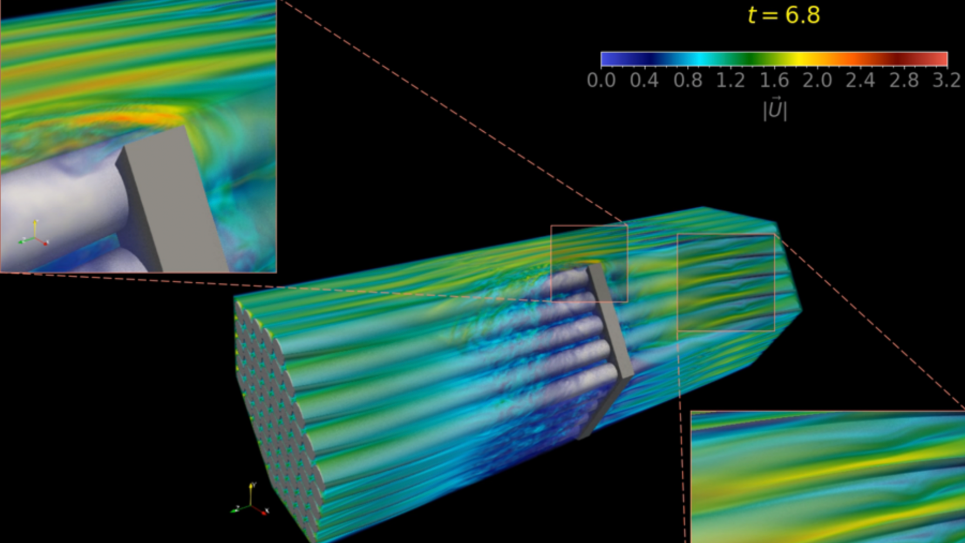
Volume rendering of flow around a blockage in a sodium fast reactor.
In this project, a team of researchers at Argonne National Laboratory plan to use high-fidelity computational fluid dynamics (CFD) and multiphysics simulations to investigate fundamental flow phenomena in next-generation nuclear power reactors.
Efforts in this project will focus on key areas relevant to the DOE’s NEAMS program and will support recent awards by the Advanced Reactor Demonstration Program (ARDP), the Technology Commercialization Fund (TCF) and support for a safety benchmark validation in conjunction with the U.S. Nuclear Regulatory Commission (NRC). All simulations will use the spectral element codes Nek5000 and its GPU variant, NekRS. The spectral element method combines the speed and accuracy of spectral methods with the flexibility of the finite element method.
Two proposed designs were awarded by the ARDP to build demonstration reactors. These are Xenergy’s Xe-100 and TerraPower’s Natrium reactors. These designs use pebble bed and wire-wrapped fuel pin cores respectively. Traditionally, industry uses low fidelity models for quick turn-around. However, these next-generation concepts exhibit complex flow and heat transfer behaviors, requiring a new generation of design tools to capture the effects with greater accuracy. All results will be used to enhance the available experimental data for validation of design tools. The simulations will be performed in collaboration with X-energy and TerraPower to directly support the ARDP awards, with the potential to accelerate the deployment of carbon-free energy solutions.
In collaboration with Framatome, we will be developing a flow-induced vibration capability that can provide a new tool for industry to accelerate the design cycle by estimating vibrations in fuel bundles. Additionally, as part of an ongoing close collaboration with the NRC in the areas of verification, validation, and uncertainty quantification, there is an opportunity to advance the state-of-the-art in modeling and simulations for post-Fukushima safety concerns. We to perform first-of-a-kind multiscale model validation of anisotropic turbulent gaseous mixing, with a particular focus on the PANDA/HYMERES-2 safety benchmark. In a unique collaboration as part of this proposal, the NRC will directly leverage leadership class resources, broadening access to these facilities.